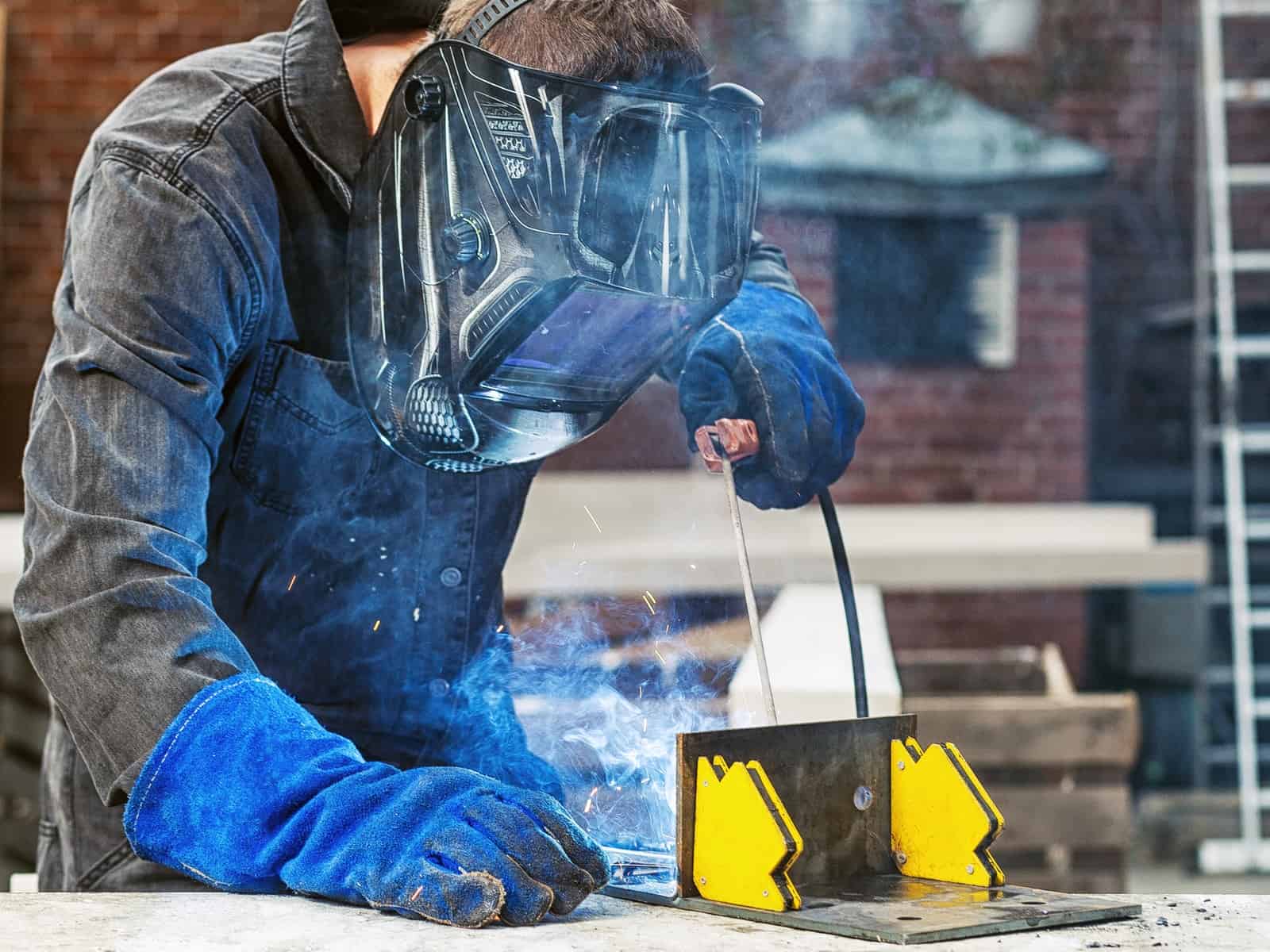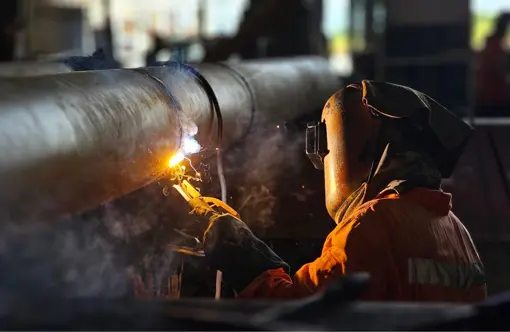What to learn about overheating prevention from Montana Mobile Welding and Repair
All Regarding Welding: Key Insights Into Techniques and Finest Practices for Success
Welding incorporates a variety of methods, each suited for particular materials and applications. Comprehending these methods, such as GMAW, SMAW, and TIG, is essential for achieving perfect outcomes. Furthermore, the best tools and safety and security techniques can not be forgotten. As prep work and troubleshooting play crucial roles in the welding procedure, understanding these components can greatly improve the high quality of the final product. What are the essential elements that guarantee an effective weld?
Recognizing Various Welding Methods
Welding techniques encompass a variety of approaches, each fit to certain applications and products. Amongst one of the most common strategies are Gas Metal Arc Welding (GMAW), Secured Steel Arc Welding (SMAW), and Tungsten Inert Gas Welding (TIG) GMAW, also referred to as MIG welding, is popular for its rate and convenience, making it ideal for slim materials. SMAW, or stick welding, is preferred for its simplicity and efficiency in outdoor settings, particularly with thicker steels. TIG welding uses precision and control, making it appropriate for detailed work and non-ferrous steels (Welding). Each method has its one-of-a-kind advantages and factors to consider, allowing welders to select the very best technique based upon the project's needs, product kind, and desired results. Understanding these methods is important for effective welding
Vital Welding Equipment and Devices
While various welding techniques require certain skills, the best equipment and tools are equally essential for accomplishing top quality results. Vital welding devices consists of welding equipments, which vary depending on the method-- such as MIG, TIG, or stick welding. Safety equipment, including headgears, handwear covers, and aprons, assurances safety and security and convenience throughout the procedure. In addition, clamps and fixtures aid safeguard materials in position, making certain precision in welds. Consumables like welding rods, cable, and securing gas are also critical components that influence the high quality of the weld. Devices such as cutters and grinders assist in surface preparation and post-weld ending up, adding to a specialist end result. Purchasing top quality equipment ultimately enhances the effectiveness and efficiency of welding jobs.
Safety And Security Practices in Welding
Appropriate safety and security techniques are crucial in the welding market to safeguard employees from prospective dangers. Welders should put on appropriate individual safety tools (PPE), consisting of helmets with correct shading, gloves, and flame-resistant garments. Ample air flow is vital to lower exposure to harmful fumes and gases produced throughout the welding procedure. Additionally, employees ought to be trained in the appropriate handling of welding tools to avoid accidents. Fire security procedures, such as maintaining combustible products away from the welding location and having fire extinguishers readily offered, are needed. Regular evaluations of tools and offices can aid recognize potential dangers prior to they lead to mishaps. By adhering to these safety and security techniques, welders can develop a more secure working setting and lessen risks connected with their profession.
Readying Materials for Welding
Preparing products for welding is an essential step that substantially affects the quality and honesty of the last item (Fabrication). Proper preparation entails cleaning the surfaces to remove contaminants such as dust, corrosion, and oil, which can jeopardize the weld. Strategies such as grinding, fining sand, or making use of solvents are commonly used to achieve a tidy surface area. Additionally, guaranteeing that the products fit together snugly is essential; spaces can cause weak welds. It's likewise important to take into account the alignment and positioning of the elements, as this will certainly influence the ease of welding and the last outcome. Picking the ideal filler product and guaranteeing compatibility with the base steels is important for achieving solid, durable welds.
Tips for Achieving High-Quality Welds
Attaining top quality welds calls for focus to detail and adherence to finest techniques throughout the welding process. Appropriate joint prep work is important, making sure surface areas are totally free and tidy from impurities. Choosing the ideal filler material and welding technique based upon the base steels is important for optimal bonding. Keeping consistent travel speed and angle while welding can advertise and stop issues harmony. Furthermore, managing warm input is necessary; too much heat can cause warping and deteriorated joints. Routinely examining the welds throughout the procedure permits prompt modifications if necessary. Utilizing suitable post-weld therapies, such as cleaning and stress alleviation, can improve the durability and honesty of the weld, inevitably making certain an effective result.
Troubleshooting Typical Welding Issues
Welding often offers obstacles that can impact the high quality and integrity of the end product. Typical issues such as porosity, inconsistent weld beads, and overheating can occur, each calling for details fixing strategies. Comprehending these problems is essential for welders to improve their abilities and accomplish ideal results.
Porosity Troubles Discussed
Although porosity can often be ignored, it stays a vital issue in welding that can endanger the integrity of an ended up product. Porosity describes the existence of small gas pockets within the weld grain, which can lead and deteriorate the joint see it here to early failure. This issue typically develops from pollutants, moisture, or inappropriate securing gas coverage during aws a3 0 the welding procedure. To mitigate porosity, welders need to validate that the base materials are completely dry and tidy, use suitable securing gases, and preserve constant welding specifications. Consistently examining the equipment and atmosphere can also help identify potential concerns before they materialize in the weld. Attending to porosity effectively is important for accomplishing solid, long lasting welds that fulfill quality criteria.

Irregular Weld Beans
Inconsistent weld grains can considerably impact the high quality and strength of a finished product. Numerous aspects add to this problem, including improper traveling speed, incorrect amperage setups, and inconsistent electrode angles. When the welder relocates also rapidly, a grain may show up narrow and lack infiltration, while moving also gradually can cause excessive accumulation. In addition, making use of the wrong amperage can result in either undercutting or extreme spatter, both of which compromise weld integrity. The welder's method, such as inconsistent torch motion, can also result in unequal bead appearance. To reduce these problems, welders must focus on keeping consistent, controlled motions and ensuring appropriate devices setups to attain harmony in their welds. Uniformity is key to achieving reputable and strong welds.
Getting Too Hot and Bending Issues
Too much warm throughout the welding process can cause considerable overheating and deforming problems, impacting the structural honesty of the work surface. These issues typically show up as distortion, which can jeopardize alignment and fit-up, making further assembly challenging. Elements contributing to overheating include the choice of welding criteria, such as voltage and take a trip rate, along with the sort of product being welded. To reduce these issues, welders should maintain constant traveling speed and proper warm input while monitoring the work surface temperature. Furthermore, pre-heating or post-weld heat treatment can assist reduce anxieties triggered by rapid cooling - Belgrade Welding. Normal examination and adherence to best techniques are necessary in stopping getting too hot and guaranteeing the long life and reliability click resources of bonded frameworks
Regularly Asked Inquiries
What Are the Job Opportunities in the Welding Sector?
The welding market offers diverse occupation chances, including positions as welders, educators, engineers, and inspectors. Experts can function in production, building and construction, aerospace, and auto fields, taking advantage of solid need and affordable salaries in numerous duties.
How Can I Improve My Welding Rate Without Sacrificing Top Quality?
To enhance welding rate without compromising top quality, one need to practice reliable techniques, preserve devices, optimize settings, and improve hand-eye coordination. Regular training and seeking feedback can likewise considerably add to achieving faster, premium welds.
What Accreditations Are Offered for Welders?
Numerous accreditations exist for welders, consisting of those from the American Welding Culture (AWS), the National Center for Building Education And Learning and Study (NCCER), and various industry-specific organizations. These credentials boost employability and show skill efficiency.
How Does Welding Influence the Properties of Metals?
Welding influences the properties of steels by altering their microstructure, which can cause adjustments in firmness, stamina, and ductility. Warm input and air conditioning prices throughout the procedure significantly influence these material characteristics.
Can I Weld Dissimilar Metals With Each Other?
